Science Through Nature Notebook Companion™ for Nature School
SAMPLE NOTEBOOK | SAMPLE LESSON PLANS | SAMPLE LESSON PLANS WITH ADD-ONS | SCOPE & SEQUENCE
“The book Nature School, coupled with one or both of the two Science Through Nature Notebook Companions™, makes an outstanding nature study course that can be used for kindergarten through about eighth grade.” — Cathy Duffy (read full review)
Are you interested in teaching your younger children and older students alike all about the natural world?
Instill a love of nature and sense of wonder in your kids by spending time notebooking your way through nature study and hands-on experiences all about the natural environment.
A nature-based education is easy when you pair Nature School with Science Through Nature Notebook Companion™. A Junior Notebook Companion™ is available for K-3 (sold separately), as well as many optional add-ons like fact cards, a coloring notebook, and lifecycle cut-and-paste worksheets.
The Science Through Nature Notebook Companion™ follows Nature School (sold separately) page by page, providing ample room for students to answer questions about what they are learning; draw and label animals, plants, and other organisms; complete engaging hands-on activities; and so much more!
It’s completely open-and-go! There’s no prep-work needed other than planning and prepping the optional hands-on activities you want to do.
Science Through Nature Notebook Companion™ and Nature School (sold separately) look at five major habitats of the world:
- Temperate Forests
- Deserts
- Seashore
- Grasslands
- Wetlands
Nature School and our Notebook Companion™ can be used with any worldview. There is nothing that conflicts with a Christian worldview, and faith-based content has not been included.
Nature School
Nature School is a beautiful living book all about the natural world. Students will learn about one habitat at a time and all the living things associated with each habitat. Using Science Through Nature, students will document their learning through notebooking activities.
Our Notebook Companion™ has been created with publisher permission from The Quarto Group.
You can buy Nature School here.
Our publisher-approved Notebook Companion™ follows along with Nature School and will help you get the very most from the book. Pair it with our included lesson plans and you can use it for a full year of elementary science!
Open-ended questions help guide students in their written response. The optional add-on Coloring Notebook provides space for true written narration and coloring and makes a great addition to our Notebook Companions. See the add-on tab for all optional add-ons.

What Students Will Learn
Students explore more than 200 kinds of animals and more than 60 kinds of plants and other organisms using Nature School and our publisher-approved Notebook Companion™.
Here’s a look at just a few of them:
- Invertebrates: cicada, spider, scorpion, sea anemone, common octopus, jellyfish, bay scallop, fiddler crab, lightning whelk, moth, sand dollar, mosquito, dragonfly, and more!
- Mammals: bat, hare, lion, porcupine, cheetah, manatee, wolf, coyote, giant anteater, blue wildebeest, dingo, fennec fox, jerboa, marsh deer, muskrat, red kangaroo, and more!
- Reptiles & Amphibians: salamander, sea turtle (all 7 kinds), frog, snake, lizard, alligator, gila monster, goanna, mangrove terrapin, skink, toad, tortoise, and more!
- Birds: gull, Canada goose, ostrich, piping plover, African fish eagle, black grouse, black-shouldered kite, common pheasant, golden eagle, hawkfinch, pharaoh eagle owl, raptor, sanderling, yellow-headed blackbird, and more!
- Fish: shark, seahorse, barracuda, bluefin tuna, common blenny, common carp, giant trevally, longnose gar, malabar grouper, rock goby, and more!
- Plants & More: oak, maple, and walnut trees; fern, herbaceous plants, mushroom, agave, pearlwort, date palm, toothed wrack, red sand verbena, big bluestem, acacia, willows, cocklebur, narrow-leaved rattle, goldenrod, bacteria, cypress, epipelon, epilithon, marsh grass, sundew, and more!
In addition to drawing numerous animals, plants, and other organisms, students will also draw and label numerous diagrams (a few of the more complex diagrams are provided so that drawing them is not required).
Concepts Covered
Nature School teaches numerous keywords and key concepts such as:
- Photosynthesis
- Climax forest
- Chlorophyll
- Tree shapes
- Leaf shapes
- Food Chain
- Types of bird nests (with examples)
- Evaporation
- Dust storms (haboobs)
- Animal and Plant Lifecycles
- Pollinators
- Nocturnality
- Predator
- Invertebrate
- Migration
- Ocean Zones
- How a tornado forms (diagram)
- Methods of seed dispersal
- And many, many more!
Explore the Earth’s Habitats
In addition to drawing numerous animals, plants, and other organisms, students will also draw and label numerous diagrams (a few of the more complex diagrams are provided so that drawing them is not required). One habitat at a time, they’ll look closely at things such as:
Temperate Forests:
- Photosynthesis
- Composition of a forest
- Levels of the forest
- Rotting log ecosystem with organisms
- Parts of a deciduous tree
- Layers of a tree trunk
- Leaf shapes
- Types of tree bark
- Fern life cycle
- Parts of a mushroom
- Forest food chain
- Kinds of bird nests
- Salamander life cycle
- Parts of various animals including an elk, bear, great tit, frog, toad, and bee (plus beehive)
Deserts:
- Deserts of the world
- Desert weathering and erosion
- Kinds of rock
- Parts of a date palm
- Desert food chain
- Types of feathers on a bird’s wing
- Parts of an ant hill
- Parts of various animals including a camel, Arabian wolf, ostrich, and rattlesnake
Seashore:
- Parts of a beach
- Kinds of sand
- Ocean zones
- Minerals in ocean water
- Parts of a wave
- Moon’s pull on the tides
- Tidal zones
- Kinds of seashells
- Types of plankton
- Fish life cycle
- Seashore food chain
- Birds with various beak shapes
- Parts of kelp
- Parts of various animals including a hermit crab, octopus, seahorse, shark, walrus, and gull
Grasslands:
- Types of grasslands
- How a tornado forms
- Parts of a piece of grass
- Parts of the carbon cycle
- Parts of a sunflower
- Grassland food chain
- Kinds of feathers
- Bird life cycle
- Reptile life cycle
- Parts of a termite mound
- Grasshopper life cycle
- Parts of various animals including an American bison, cheetah, prairie chicken, Great Plains skink, and cicada
Wetlands:
- Parts of a wetland
- How wetlands form
- Parts of a hurricane
- Parts of an aquifer
- Parts of the water cycle
- Types of algae
- Parts of a mangrove tree
- Wetland food chain
- Differences between an alligator and crocodile
- Mosquito life cycle
- Parts of various animals including an opossum, heron, snapping turtle, and dragonfly
Fun Facts and Rabbit Trails
Nature School includes more than 100 Fun Facts that add fascinating bits of information to your science study (and provide numerous opportunities for going down rabbit trails!). Our Science Through Nature Notebook Companion™ provides pages for recording each of these Fun Facts.
Hands-On Activities
Nature School also includes 35 activities students can complete at home using everyday items. The Science Through Nature Notebook Companion™ includes pages for each activity where students can save pictures of their projects, record key ideas learned, and much more.

Take a look at the activities included:
Temperate Forests Activities
- Nature Journal
- Hidden Hues
- Broad Leaf and Needle Leaf Comparisons
- Transpiration Demonstration
- Make Tracks (scat, footprints)
- Bark and Leaf Rubbings
- Painting with Evergreen Branches
Deserts Activities
- Nature Journal
- Grow a Garden
- Desertscape Diorama
- Create a Cactus
- Nature Walk
- Evaporation Demonstration
- Sundial
- Map the Desert
Seashore Activities
- Nature Journal
- Salt Painting
- Salt Dough Seashells
- Ocean in a Bottle
- On the Beach: Beachcombing
- Seashore Scavenger Hunt
Grasslands Activities
- Nature Journal
- Build a Burrow
- Camouflage
- Pressed Grasses and Wildflowers
- Growing Grass
- Tornado in a Bottle
- Paint a Prairie
Wetlands Activities
- Nature Journal
- Pond Dipping
- What’s a Wetland?
- How Wetlands Work
- Breathing Leaves
- Algae Observation
- Just Add Water
There are additional blank notebooking pages provided so you can customize the learning in whatever way fits your family the best!
Build a lifelong love of learning and an appreciation of nature as you have fun learning about the science that’s all around us in the world. The possibilities for learning are truly endless with Science Through Nature Notebook Companion™ and Nature School (sold separately)!

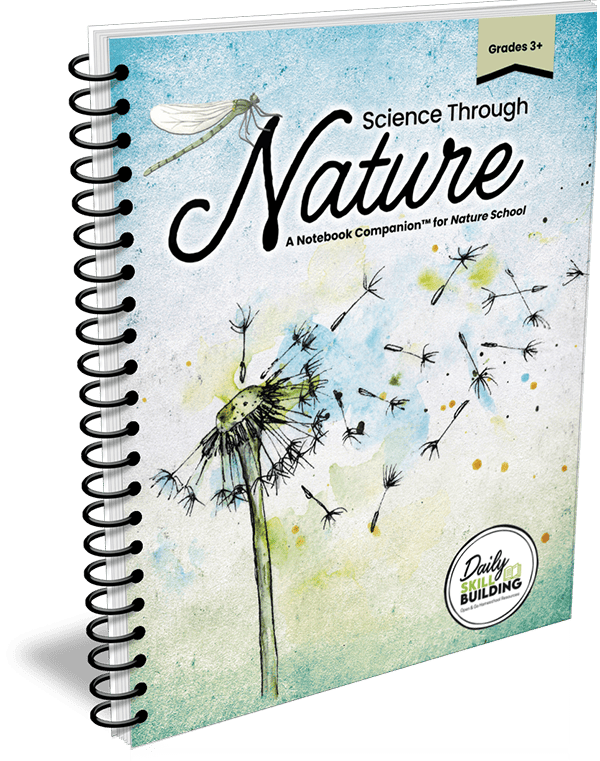











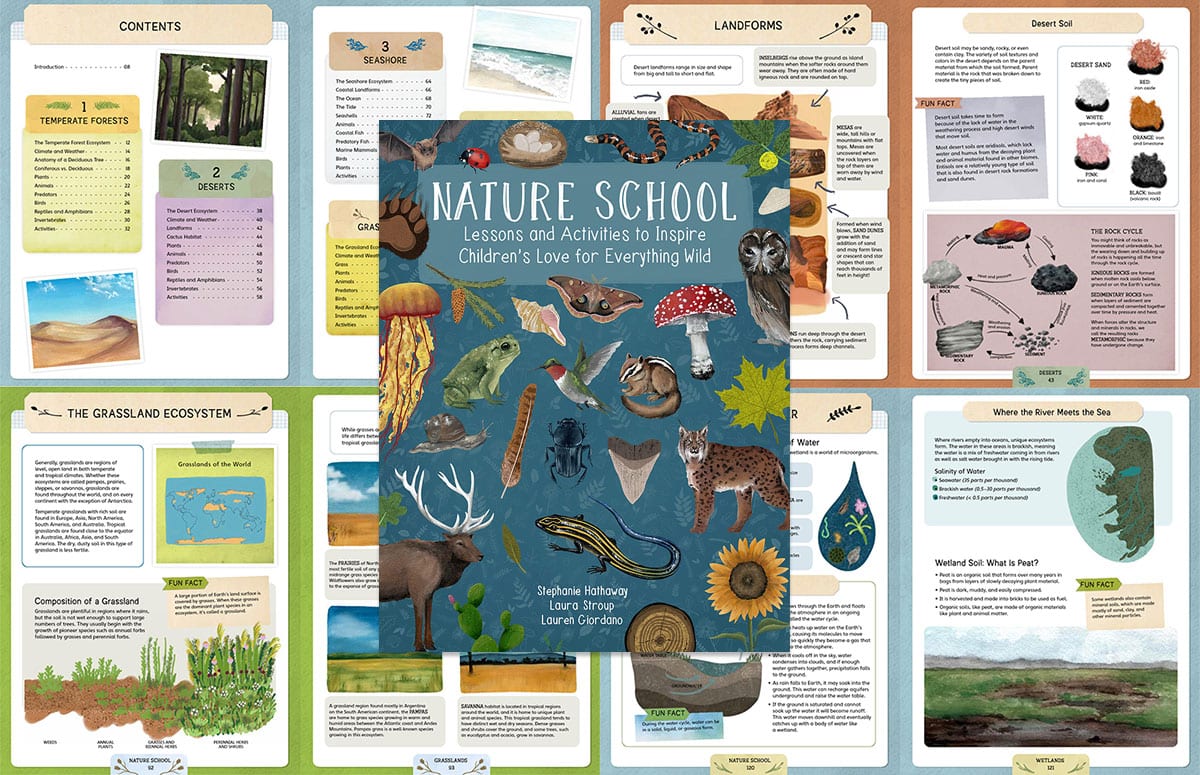
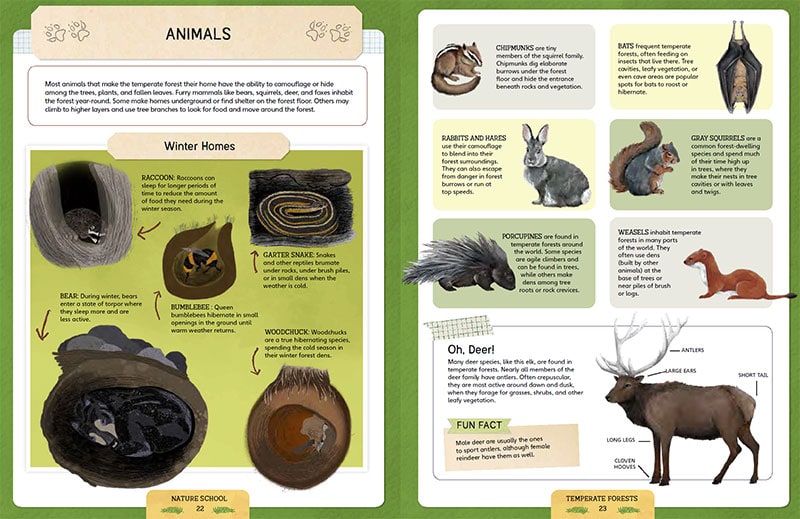


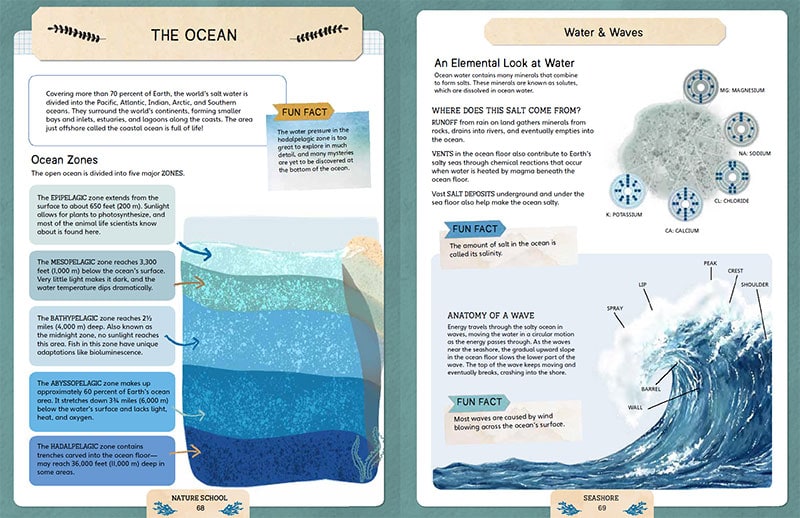



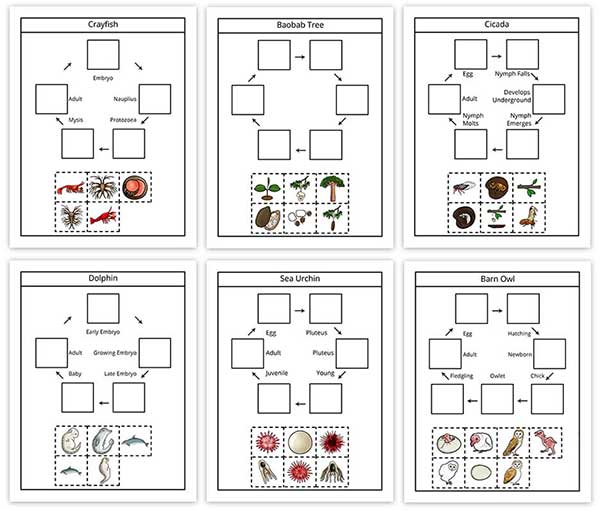


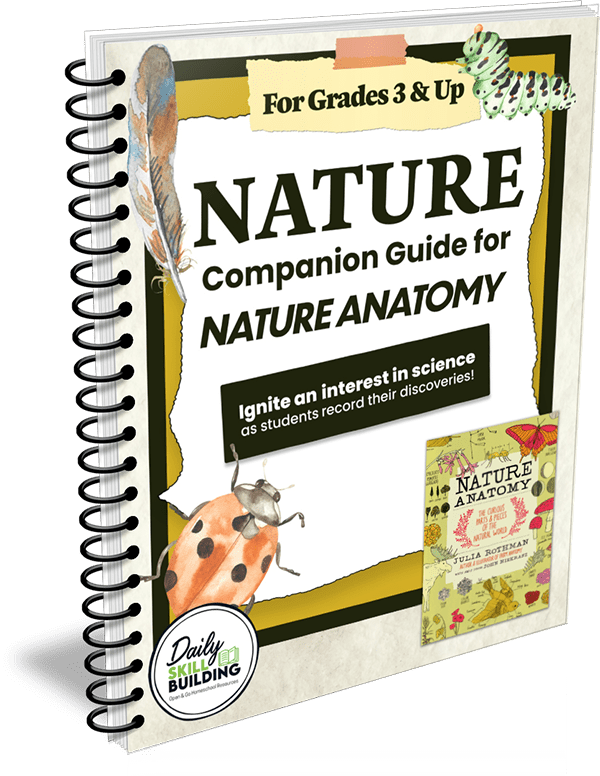


Rebecca Brown –
Great notebooking pages for a great book!
Lynn –
I love this! The “Science Through Nature Notebook Companion” (Grade 3+) provides a year (30 weeks) of fun and fascinating science lessons.
Through the study of Earth’s different biomes (temperate forests, deserts, seashore, grasslands and wetlands), students will study the layers of the forest, predators, invertebrates, photosynthesis, the organisms on rotting logs, food chains, the different types of nests, desert formations, pollinators, aestivation (new term for me!), migration, coastal landforms, the types of sand, ocean zones, savannas, tornados and hurricanes, the carbon cycle, biodiversity, the water cycle, fish, reptiles and amphibians, mammals and much, much more. The notebook companion is engaging and well-presented with a range of tasks, pre-drawn illustrations, maps and diagrams and further activities. Questions are open-ended, with a mix of writing, illustrating, labeling and other tasks, and will help students to engage more deeply with the topics and consolidate learning.
There is also a junior version of the notebook for K-3, which I also love! The differentiated levels of notebook make it easy for children of different ages to participate together in family science/nature lessons, although they are also suitable for independent work.
Optional add-ons enrich the course and can easily be incorporated into the study as they are laid out in the included lesson plans:
– 75 cut and paste life-cycle worksheets with answers (colour and B&W versions included) (Junior);
– colouring notebook with 176 items to colour and write about (Junior and Grades 3+);
– 167 fact cards complete with pictures and text or just with pictures for your student to complete with key information (scientific name, colours, size), with both available in colour/B&W versions (Grades 3+).
I highly recommend this!
Melanie Zorr –
This is such a neat book! The book itself has beautiful pictures and fantastic information. The notebook companion does not disappoint! At first it seemed so overwhelming with all of the extras (like the fact cards and the cut and paste options), but the Lesson Plans are so helpful! There are 2 different lesson plans: 1 just the basic notebook broken down and 2 the notebook broken down along with the extra options AND suggestions for more enrichment ideas like watch a movie about the temperate forest. There are many options for writing, coloring, labeling, diagraming, and you could use it to find different specimens (like different types of leaves, different bark, etc) and glue parts to your notebook or do leaf rubbings or whatever. This is definitely for students in grades 3 and up as the level of questions will make them think a little bit more. I love that this can be an entire year long science curriculum and that it can be used alongside the Junior notebook edition to have all of your children in one science stream. This is such a neat resource!
Katherine Tanyu –
“Science Through Nature” walks your student through five of the earth’s largest biomes (temperate forests, deserts, seashores, grasslands, and wetlands). Your child will be learning about their ecosystems, plants, and animals. This 305-page notebook companion has many blank spaces for answering questions and drawing. At the end of each unit, your student is encouraged to look for fun facts to summarize their learning. This notebook is very comprehensive–prepare to do a lot of writing! There are pages toward the end specifically for journaling with guide bullet points to aid your child in completing them.
The included scope and sequence help you in planning your lessons. There is also an optional add-on (359-page coloring notebook and journal) for your creative child. You may also purchase the fact cards and life cycle worksheets.